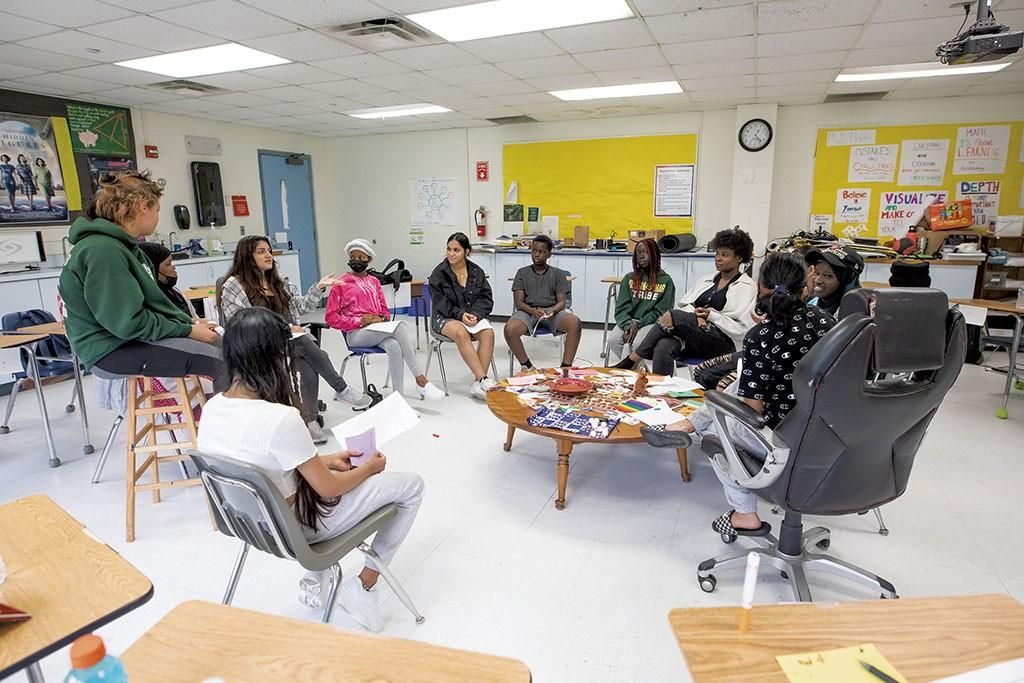The Burlington School Board needs a fresh perspective on how to better serve the city's children. Saja understands the issues facing our young people and what needs to be changed. She wants to make the school district the best it can be. She is running for school board member to improve the education of our children and make our city the best in the state.
Educating our future
The Burlington school district is set to receive $890,000 in federal funding to help fill in gaps in the current curriculum. This money comes from Recovery Act Positions and Plan ESSR3, and the funding is available over two fiscal years. The money is meant to create new opportunities and strengthen existing programs. Students will also benefit from a student-centered approach that focuses on academic achievement, social responsibility, and 21st century skills.
Vander Linden and Kuhlmann developed a project called Cadre that offers small groups of teachers the opportunity to learn about technology and how to use it in the classroom. Vander Linden believes that one-to-one technology is not just about devices - it is about making educational opportunities more accessible, especially for students who live in smaller communities. The Burlington school districts have been offering training to teachers on technology integration since 2007. They also hold periodic gatherings with teachers to discuss successes and challenges.
In addition to teacher training, the Burlington-Alamance school system is launching a teacher cadet program this fall. The program will provide students with a pathway to a college degree and training to become a teacher in the community. With the program, the Alamance-Burlington School System and Alamance Community College are addressing teacher shortage issues in area schools, as well as enhancing racial diversity in local classrooms.
Diversity in our school district
A strong diversity program will prepare educators to welcome students and staff from diverse backgrounds into the classroom. These programs will focus on anti-bias and social justice, and they will include classroom conversations about diversity and inclusion. To increase diversity in education, EdD programs should be developed in collaboration with community groups. Some school districts have partnerships with nonprofit groups to increase diversity.
Diversity Advisory Committees have been developed to provide support to school district staff and students. They discuss areas of concern, provide training to staff, and help the district develop future diversity action plans. The committee will also participate in professional development activities. The purpose of the Diversity Committee is to create a supportive culture within the district and to build understanding among staff and students.
In the last decade, America's public schools have become more diverse. The percentage of students of different races has increased by more than 50 percent. Historically under-represented groups make up about one-sixth of the overall student population. The number of students of color attending public schools has risen in the past twenty years, with black and Hispanic populations staying relatively constant.
In 1995, fewer than half of all districts were diverse. This is a worrying trend, especially considering the demographic changes in the nation. While integration in the past decades has taken hold in many large cities, the majority of school districts are still overwhelmingly white. As a nation, we are nearing a demographic tipping point. By 2020, there will be more children of color than white in America.
Free and reduced price meal program
The Free and reduced price meal program at Burlbury schools provides meals to students free of charge. If your child qualifies, the school will notify you. Applications are confidential and may be submitted at any time during the school year. Once your child is registered, you may visit the school cafeteria to pick up your child's food.
The Burlington Community School District has eight schools and serves 3,319 students. Approximately 40% of the student body is non-white. The percentage of economically disadvantaged students is 42.3%. The percentage of Hispanic/Latino students is 6.6%. Native Hawaiian students make up 0.1% of the student body. Ten percent of the students are classified as "other" or "non-specified."
The program also offers an online service for parents. MySchoolBucks allows parents to track recent purchases and make pre-payments with credit/debit cards. However, this service is only offered for convenience. Parents can still choose to pay with cash or check. These are the two main ways to pay for school meals.
The Free and reduced price meal program at Burlbury schools serves students who have low incomes. This program is offered to students living in households with incomes between 130% and 185% of federal poverty level. In addition, students who are homeless, on TAFDC, or on SNAP are categorically eligible.
Despite the fact that implementing the Free and Reduced Price Meal Program at Burlington schools is challenging for many schools, it is possible to make a difference. A healthy school environment begins with education and awareness of nutrition issues. By establishing policies and making improvements, hospitals can help improve a school's food environment.
English language learners
For many families who may not have much English, Burlington schools have a multilingual liaison. The role of this liaison is to help students with English as a second language (ESL) learn the language. In Burlington, there are 12 such liaisons. Some of them teach children in grades one through five, while others work with refugee students or English-language learners in elementary and middle school.
The program pairs English-learner students with students who have undergraduate degrees in teaching. The goal is to help students improve their English skills so that they can successfully integrate into the mainstream classroom. The program is open to all Burlington public schools, and is taught by trained professionals. This unique partnership provides students with the opportunity to meet other English language learners, practice teaching English, and grow as teachers.
In addition to classroom instruction, the program also provides after-school programs for English-learner students. These programs vary in size and approach, but all have the same goal of developing students' English skills. Nearly one-fifth of the students in the Burlington school district are English-learners. The majority of these students speak Nepali, and English is their second language. However, Vermont is one of only four states that does not recognize Spanish as an official language.
The proposed changes to public school funding in Vermont are deeply damaging to vulnerable English language learners. Local city councils from Winooski and Burlington have urged the state legislature to change its course.
Tax levy
The governor's proposed budget spares all New Jersey public school districts from cuts, but it doesn't spare local property owners from a tax increase. The New Jersey Department of Education tracks school tax levies - the amount of money raised by local property taxpayers to fund their school budgets. School districts in Burlington County are experiencing increases in school tax levies.
The amount of money generated by the tax levy for Burlington schools is calculated using a formula that incorporates the assessed values of all taxable properties in the municipality. Typically, the amount is expressed in mills, which is one dollar per $1,000 of assessed value. The total amount is a fraction of the total property tax levy, which is an important way to track school district finances.
The budget also has a section for tax levy data. The "UFB-1" tab accounts for the tax levy data. The state requires a User Friendly Budget every year, which includes more specificity and detail than a typical long-form budget. A UFB-I contains all the information needed to make an informed decision regarding the budget of a local government.
The city's drop-box has moved to 390 Brant St., the same building that hosts Coffee Culture. There, you'll find a blue drop box. If you'd like to pay your taxes in person, you can visit the city hall at 390 Brant St. in Burlington. You can pay by cash, check, or credit card. You can also pay online.

















